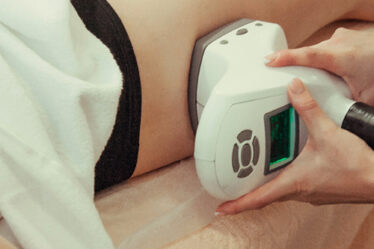
In the ever-evolving field of healthcare, managing finances efficiently is as crucial as providing top-notch patient care. One of the pivotal components of this financial management is charge entry in medical billing. Understanding and executing charge entry correctly can have a significant impact on your practice’s revenue cycle. This guide will delve into the importance of charge entry, its core components, common errors to avoid, and how modern technology enhances this process.
What is Charge Entry in Medical Billing?
Charge entry in medical billing involves the systematic process of recording and entering charges for medical services provided to patients. This critical step ensures that every service is accurately documented and billed, which directly affects a healthcare provider’s financial stability. According to the medical billing experts in the USA, Medheave “Accurate charge entry facilitates appropriate reimbursement from insurance companies and maintains a smooth revenue cycle”. Now, we will learn about the main component of charge entry in medical billing.
Core Components of Charge Entry in Medical Billing
- Medical Coding: Assigning the correct CPT (Current Procedural Terminology) and ICD-10 (International Classification of Diseases) codes is essential. These codes categorize the services provided and are used to generate claims that determine the reimbursement amount.
- Service Pricing: Accurate pricing must reflect the complexity of the procedures and align with market rates. This prevents discrepancies and ensures fair compensation for the services rendered.
- Documentation Accuracy: Proper documentation of medical records, including test results and other relevant information, supports the charges entered and reduces the risk of claim denials due to incomplete or incorrect data.
- Charge Capture: It’s crucial to capture all services and procedures performed. Omitting charges can lead to lost revenue and financial instability.
- Insurance Verification: Ensuring that insurance information is accurate and up-to-date helps prevent delays in reimbursement and avoids claim rejections.
Why Accurate Charge Entry Matters
Accurate charge entry is more than just a clerical task; it’s a fundamental aspect of financial health for healthcare practices. Correctly entering medical codes and setting appropriate prices are crucial to avoid claim denials and underpayments, which can adversely affect your practice’s revenue.
Complete and precise documentation is equally important. It ensures that all services are accounted for and justifies the charges billed. This thorough approach not only helps in preventing issues during audits but also maintains the financial health of the practice.
The Charge Entry Workflow in Medical Billing
An efficient charge entry workflow ensures that all steps are completed accurately and timely:
- Review Patient Records: Begin by examining patient records to identify and capture all services provided.
- Assign Medical Codes: Use CPT and ICD-10 codes to categorize services accurately.
- Set Pricing: Determine the appropriate charges based on contracts and fee schedules.
- Enter Charges: Input the charges into billing software with precision to avoid discrepancies.
- Verify Accuracy: Cross-check entered charges with medical records and coding rules to reduce errors.
- Submit Claims: Send charges to insurance providers electronically or via paper forms for timely reimbursement.
Common Errors to Avoid in Charge Entry
Errors in charge entry can lead to significant financial and compliance issues. Some common mistakes to avoid include:
- Incorrect Coding: Using outdated or incorrect codes can result in improper billing and compliance issues. Always ensure codes are up-to-date and accurately reflect the services provided.
- Pricing Errors: Mispricing services can cause financial discrepancies. Regularly review and update pricing information to align with payer agreements and market rates.
- Incomplete Records: Missing documentation can lead to claim rejections. Ensure all relevant records are complete and accessible.
- Omitted Charges: Overlooking charges can result in lost revenue. Thoroughly review patient records to ensure all services are billed.
How Technology Enhances Charge Entry in Medical Billing
Advancements in technology have revolutionized charge entry, making it more efficient and accurate. Here’s how modern solutions can benefit healthcare practices:
- Enhanced Coding Accuracy: Automated systems improve coding precision, reducing compliance issues and ensuring accurate billing.
- Increased Efficiency: Automation speeds up the charge entry process, boosting productivity and reducing manual effort.
- Immediate Error Detection: Real-time validation features catch and correct errors instantly, minimizing the risk of claim denials.
- Seamless Integration: Electronic charge entry systems integrate effortlessly with billing software and electronic health records, ensuring cohesive data management.
When to Execute Charge Entry for Maximum Efficiency
To optimize the revenue cycle, charges should ideally be entered on the same day the services are provided. Delays in charge entry can extend the time it takes to receive payments from insurers, affecting your practice’s financial flow. Establishing clear deadlines for charge entry can help streamline operations and ensure timely reimbursements.
Final Thoughts
Effective charge entry is a cornerstone of a well-managed healthcare practice. By ensuring that charges are recorded and posted accurately and promptly, you can avoid payment delays and maintain a healthy cash flow. Implementing robust charge entry practices, leveraging technology, and adhering to clear procedures will contribute to enhanced billing efficiency and overall financial stability.


